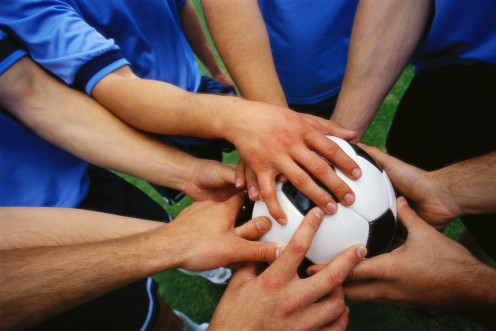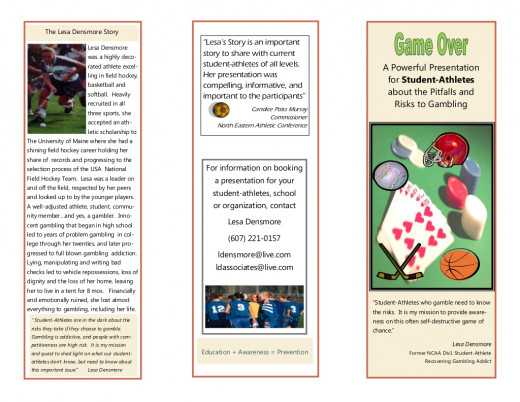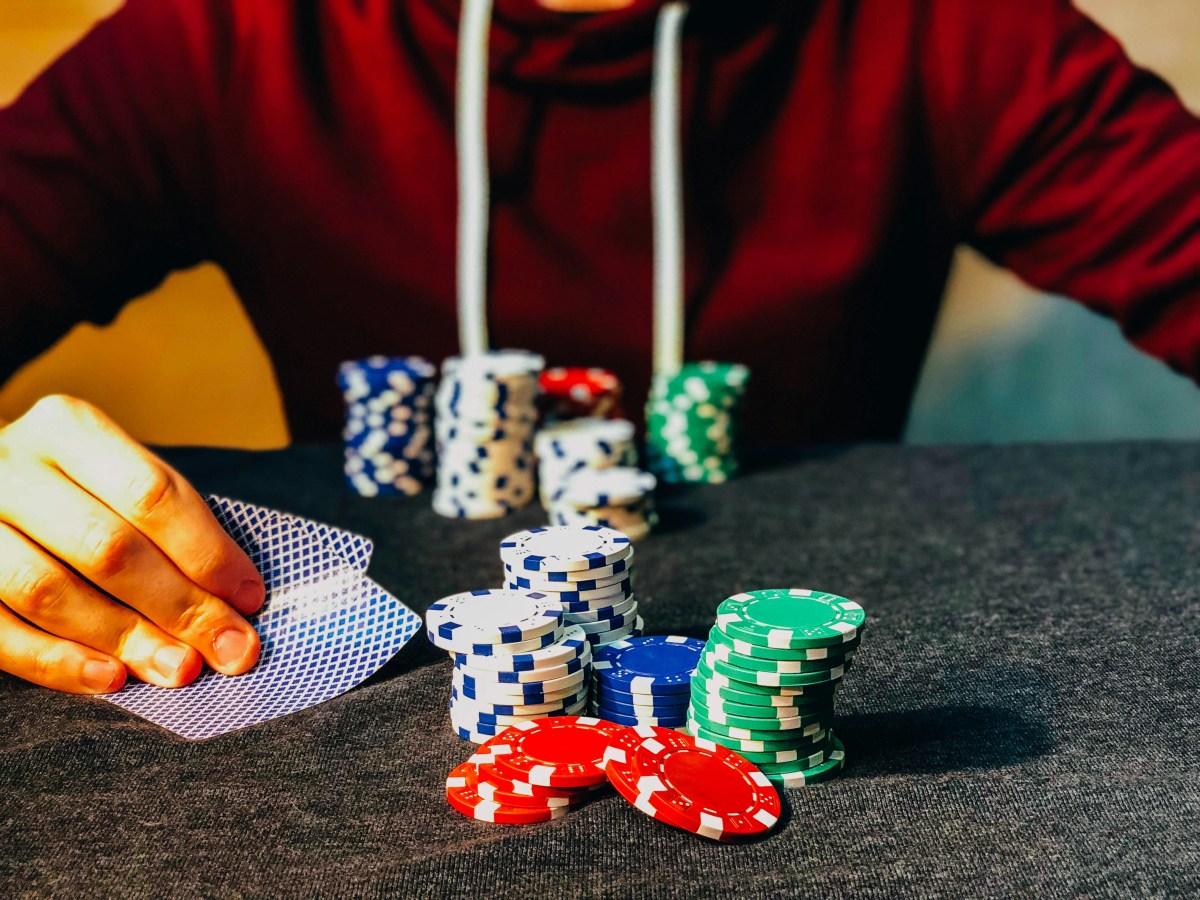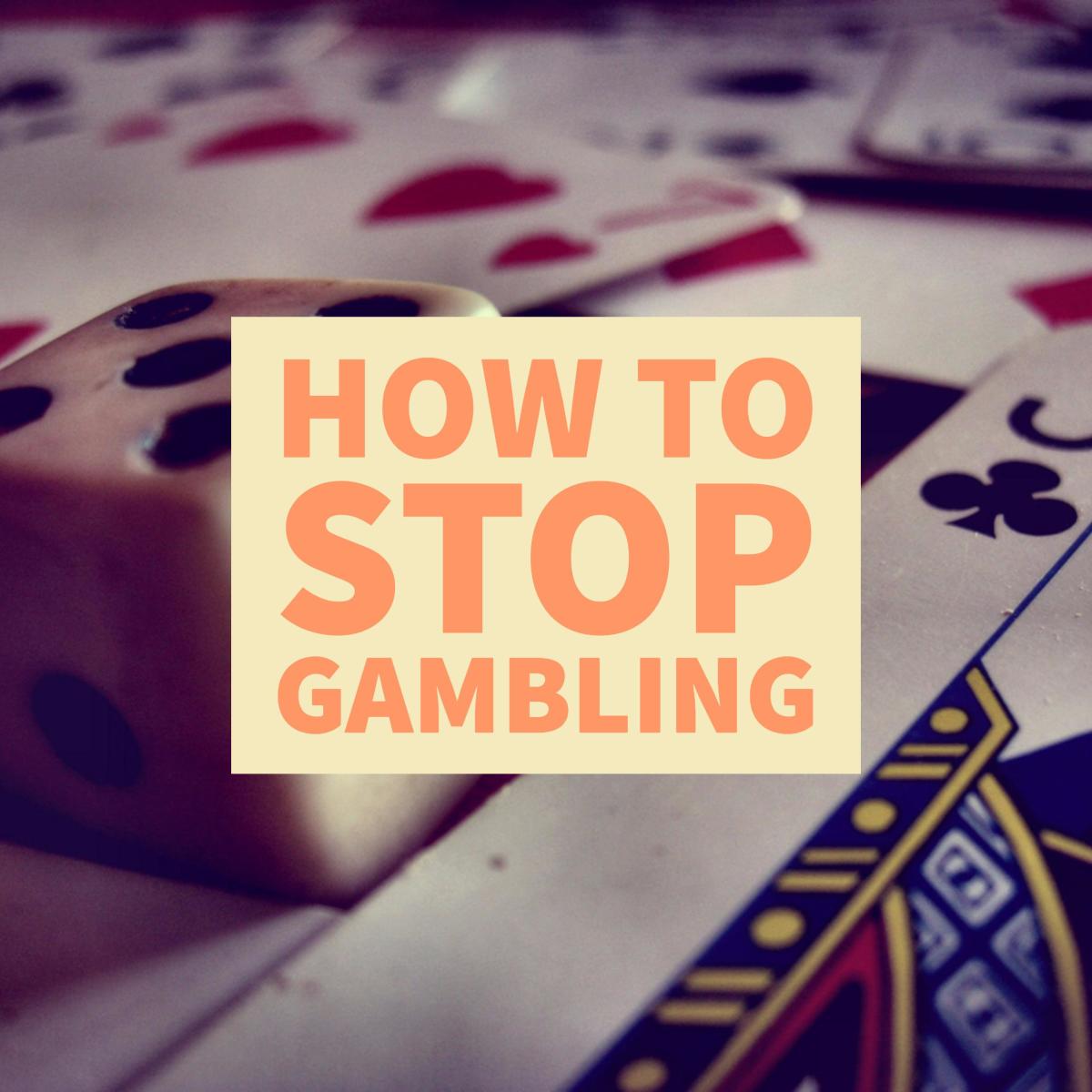- HubPages»
- Health»
- Mental Health»
- Addiction
Problem Gambling & the Student Athlete: A Problem On the Horizon
Lesa Densmore Interview with The Press Box
Athletes and Coaches Beware
It's no secret today that society is becoming more aware of the hazardous, negative effects of gambling. Like drugs and alcohol, gambling is clinically recognized as highly addictive, and measures are being taken in the areas of education, prevention and treatment.
Addiction is a progression, it can be slow or quick, and is personalized based on many factors. Whether chemical such as drugs and alcohol, or non-chemical such as gambling, the simple truth is that addiction will only occur if the act of doing something or ingesting something provides a reason to want to do it again, and again.
Some people gamble or wager money, but do not suffer consequences or problems. There are many factors that contribute to gambling addiction. The purpose of this article is not to dissect these factors, but to recognize that some individuals pose a higher risk of developing serious consequences or addiction to gambling, and competitive athletes and coaches need to be aware.
Understand the Risks

Problem Gambling: The Dangers of the Win / Loss Dynamic
Because of the win / loss dynamic of gambling, competitive athletes and coaches need to be aware that there can be an increased risk for them to develop problems. As any competitive athlete or coach can attest, winning is the ultimate reward, and end goal for any contest or game. The feeling and rush of winning (or the effects) for an athlete is something one strives for over and over. Losses on the other hand are typically disappointments, but very much a part of the game. Competitive athletes and coaches do not like to lose, and will often "chase" a loss with the determination to win the next time around. Because of the natural competitive nature of athletes, it is common for one to get involved with gambling and treat it like a game of skill, not a game of chance. This can be very dangerous. It only takes one wager, and the game is on.
Unfortunately, losses in gambling are more prevalent than wins, and the winning phase of this addiction is always short lived. The win / loss dynamic of gambling, combined with the action and risk effects is very powerful in general, however; this effect can be more powerful for competitive athletes who latch onto it.
Competitive people who gamble often can get sideswiped by its force, finding themselves facing the uncontrollable need to chase losses while suffering major consequences.
Problem Gambling Warning Signs among High-School and College Age Students
Problem Gambling WARNING SIGNS
- Preoccupied with gambling constant thoughts of gambling or getting money to gamble
-
Secretive / Brags about gambling habits, defensive when confronted
-
Lying about the extent of gambling, or to cover up gambling activity
-
Borrowing money using financial aid money or other needed money to gambling
-
Missing classes, work, or social events because of gambling
-
Restless or irritable when not gambling
-
"Chasing" losses with more gambling, trying to salvage losses by gambling more
-
Increasing bet amounts when gambling in order to achieve the desired excitement ("high")
-
Unsuccessful attempts to control cut back or stop gambling
-
Arguments with friends, significant others and family about gambling activity
-
Frequent Mood Swings around gambling activity, or lack of
-
Neglecting Responsibilities to engage in gambling activities
-
Relying on others for bail outs family members, roommates, friends, or others to relieve a desperate financial situation caused by gambling
How Student-Athletes Get Hooked
If a competitive athlete gambles, it can take as little as one win to get hooked, and one loss to want that win back. This is how the cycle to addiction can begin. When a loss takes place in gambling, the normal reaction for a person who is not at risk, or is simply participating as an innocent means of entertainment, would not want to continue to gamble. The competitive athlete on the other hand might begin to strategize and make adjustments in how they gamble, when they gamble, and what they gamble on, with the mindset that they can create a situation in which they "believe" will result in a win.
Athletes don't like defeat, and will always work harder for the win. Athletes often “play gambling”, like they play basketball, soccer, swimming or any sport, naturally giving it their all. If this happens and continues, more money is invested, guilt and shame compliment financial losses, and there is a pre-occupation with trying to regain control by continuing the gambling cycle. This is how gambling addiction can work. It's sneaky, manipulative, and destructive for many.
As the athlete continues to chase the loss, problems will progresses. Most competitors don't realized what they are dealing with. Financial devastation and irresponsibility compliment relationship issues, and school life is jeopardized. Fear, hopelessness, shame, and guilt set in causing extreme emotional strain. When the addiction moves out of the losing phase, it no longer becomes about wins, losses, money, or action, but a vicious cycle of escape, desperation, and hopelessness that if not diffused or treated will always end in devastation.
As an athlete or coach you should be aware of the high risks you take if you gamble. More important, it must be understood and respected that problem gambling, and gambling addiction is real, and if you chose to gamble, it can happen to you. Anyone who decides to gamble or wager money is at risk of developing problems, but those with natural competitiveness need to pay close attention because there is an added risk.
Gambling is not a game of skill, but one of chance. Competitive athletes do not often recognize this dynamic and can blindly find themselves trying to “get better at it” while sinker deeper into the problem, as negative consequences rise.

What Coaches Need to Know
More education and awareness on the power of gambling addiction is needed in general, but an emphasis needs to be placed on this through schools and university athletic departments. Sports wagering, (one form of gambling) and poker is on the rise with our youth athletes, and is prevalent at the high school and college level. Trends in high school sports usually follow trends at the college level, and are transferable to adulthood. Athletic administrations and coaches at the collegiate level need to be aware that there is a sharp rise in gambling at the high school level, and once the student athlete reaches college, a problem may already exist.
My Message
As a former division 1, full athletic scholarship athlete, who was once in the troughs of a gambling addiction, I know first hand how destructive gambling can become for athletes. Although there are many factors to developing addiction, I latched onto gambling early, treating it like a game of skill, chasing my losses, and believing I would prevail. My ignorance about gambling as an addictive activity, combined with my competitive nature was a recipe for destruction. Early on I was proud to be the gambler, feeling powerful about it, and wanting to introduce it to those around me.
Student-Athletes often carry the weight of the world on their shoulders, showing no fear, with the constant reminders to "suck it up". Many student-athletes neglect their own emotional wellness by being the "rock", that everyone relies on. It's important for coaches to be aware that athletes rarely displays signs of emotional strain, and are among some of the most resilient, even in the most trying times. Off the court, many high school and college athletes have personal, family, financial, relationship and school stress that requires a means of coping. The effects of gambling (and other vices) can provide both the rush that athletes crave, as well as the relief and escape from outside problems they often need. Unfortunately, the effects of gambling satisfy these needs outside of ones awareness, making it easy to want to come back again and again. In other words, it's narcotic.
If you would like more information about providing education and awareness to high school and college age student-athletes, I invite you to preview GAME OVER. Prevention is possible, but awareness must come first.
Game Over










